Review: Motorola Atrix 4G
Feb 25, 2011, 3:27 PM by Eric M. Zeman
Phone Scoop goes in-depth with the Motorola Atrix 4G, a dual-core Android smartphone that can transform into a netbook replacement with the laptop dock accessory.
Form
Is It Your Type?
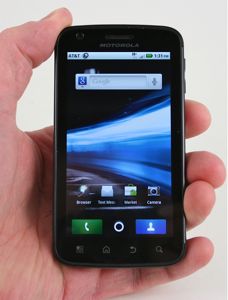
The Motorola Atrix 4G by itself is another me-too, slab-style Android smartphone. What makes the Atrix 4G unique isn't the phone itself, but the accessories that Motorola and AT&T have chosen to make for it: a laptop dock that converts the Atrix 4G into a netbook, and other docks for desktop and multimedia. Is this new-fangled vision the future of mobile computing, or just an expensive gimmick?
Body
As with most modern Android devices, the Atrix 4G has a large display that dictates the other dimensions of the phone. It is light weight and thin, but the length and width are a force to be reckoned with. The materials of the Atrix 4G are top notch. The plastic, metal and glass all feel high quality. The build of the Atrix 4G is as good as you can ask for in a handset. The finely rounded bottom edges of the Atrix make it comfortable to hold and it fits well in the hand. It is easy to place into and retrieve from pockets.
There are four buttons — the standard Android Menu, Home, Back, and Search keys — below the screen on the front face of the Atrix. They are capacitive, and not physical, buttons. I prefer the ease of use of physical buttons, but you may like the smoother feel of the capacitive buttons.
There are no buttons on the left side of the Atrix 4G. The microUSB and HDMI ports are paired together close to the bottom edge of the phone. The volume toggle is tucked on the right side of the phone, near the very top. It is a little bit on the small side, but travel and feedback were good. The Atrix 4G lacks a physical camera key, and I miss it.
The power/lock key is placed on the top of the Atrix 4G and it takes some getting used to. Rather than use a normal button that needs to be depressed, the Atrix 4G opts for an angled button that's recessed into the top edge of the Atrix. This means it is easy to find, but takes extra work to use. The button doubles as a fingerprint scanner for security purposes. The settings for it are buried pretty deep down, and it takes a few minutes to set up. Once it learns your fingerprints, it can be used to unlock the phone. The positioning on the back edge of the phone makes it awkward to use for those purpose, however. A 3.5mm headset jack is next to the power button.
The battery cover needs to be removed to access the microSD port, but thankfully the battery itself may remain in place.
The Three S's
Screen
The Atrix 4G uses a 4.0-inch LCD with 960 x 540 pixels. It looks gorgeous. Icons, graphics, and text look stunning, and the display is plenty bright for any sort of indoor viewing. Outside, things become more problematic. Direct sunlight almost completely obscures the display. Partly cloudy skies are less troublesome, but still make reading the display outside difficult. Still, the pixel density makes up this when you're using it indoors.
Signal
I experienced pretty good signal performance with the Artrix 4G. Both in Manhattan and around northern New Jersey, the Atrix 4G typically held onto three or four bars. I never saw it drop to one or fewer bars, and it also never dropped to AT&T's EDGE network. It stayed connected to AT&T's HSPA 3G network the entire time I used it. So far, it hasn't dropped any calls, and data speeds appear to be consistently zippy.
Sound
Call quality was solid during the calls that I made. I didn't hear any pops or hissing, and volume was consistent during calls, though it sounded just slightly muffled. Earpiece volume was very good. It was loud enough to hear callers in a very noisy and crowded mall. Speakerphone quality and volume were also good. I'd say using the Atrix 4G as a speakerphone in a small office would be just fine. Ringers and alert tones were loud enough, but just barely. Set to maximum, I wouldn't be surprised if you missed a call or two in noisy places because you couldn't hear the ringer.
Battery
Here's where we run into a significant problem. The 4-inch display and dual-core processor set-up appear to be eating into battery life a bit. I was unable to get the Atrix 4G to last from 8AM to 8PM. It typically died between the 10- and 11-hour mark. That's just not good enough (especially with Bluetooth, GPS, and Wi-Fi all off). Power users can't plan their days around where they can locate an outlet. It also lost an entire charge (from 90% to dead) between 11PM and 7AM — when it wasn't used at all. This thing is going to have to be plugged in all the time, and I'd even recommend carrying a spare battery if possible.
Dock
The coolest feature of the Atrix 4G isn't found anywhere on the phone itself. Instead, it is the host of docks and accessories that can be fitted to the phone. There is a standard dock that only charges the Atrix, there is a multimedia dock that lets the Atrix attach to a TV or stereo system, and there is a bluetooth keyboard and bluetooth mouse for interacting with the Atrix. There is also the laptop dock.
The multimedia dock can be used to hook the Atrix up to a TV, and thanks to the HMDI port, can share HD video. It's not difficult at all to set up. Once the Atrix is in place and an HDMI cable plugged into your TV, simply choose the video content you want to watch — be it prerecorded movies or stuff you captured with the Atrix 4G itself. Video playback at 720p on my TV was decent, but not the same quality I can get from regular HD content from my cable provider.
The laptop dock cradles the Atrix behind the display, and will charge it when the dock is plugged in. Placing the Atrix 4G in the dock automatically launches WebTop mode. The laptop dock goes beyond simply mimicking the Atrix's display, it also offers a few extra features. We'll get to those in a minute.
The laptop dock itself is heavy and bulky. It's bigger than a netbook — it's almost as big and heavy as a MacBook Air. Those aspects alone make its worth questionable to me. The cradle for the Atrix is on the back hinge, and swings open to accommodate the phone. This rotating cradle is a bit flimsy if you ask me, and it requires a lot of effort to shove the Atrix properly onto the cradle. There are two USB ports and a charging port on the back edge of the laptop dock. The USB ports can be used to attach a mouse or an external keyboard, if you wish. They also support flash drives, which can be accessed from the Atrix 4G. The file manager tool on the Atrix can be put to use moving files between the Atrix and the flash drivers.
The screen is plenty big, and is bright and has a decent resolution. The dock has a real QWERTY keyboard, complete with a row for numbers, arrow keys, etc. It has a good-sized trackpad, and two trackpad buttons. The keyboard felt a little squished to me, but the feedback of the keys was good enough. You're not going to want to write The Great American Novel on it, but it's way better than typing on a small glass screen, that's for sure.
Overall, the hardware is OK, but not great. For a $500 accessory (yeah, I know, ridiculous, right?), it feels a bit too cheaply made. However, it does what it advertises — it gives the Atrix 4G access to a bigger display, charging station, and full keyboard. But what about the software?
The “WebTop” mode brings the Atrix's home screen to the laptop dock. You have full control over the phone, its apps, and functions. It conveniently offers quick access to 10 different functions (Mobile View, Phone, Contacts, Messaging, Media, Files, Motorola Zone, Firefox, Facebook, and AT&T U-Verse) in an array of shortcuts placed at the bottom of the screen. The Atrix's home screen can be shuttled off to a small window, or blown up to occupy the entire display of the laptop dock.
Every function you choose to perform is opened in a Firefox window (why Firefox and not Chrome is beyond me). Want to open the music player? It opens a Firefox window. Want to make a phone call? It opens a Firefox window. In fact, you can open every single application at once and simply have them arranged in a huge row of Firefox tabs.
Everything (yes, everything, including taking pictures) that you can do with just the phone, you can also do when the Atrix is in the laptop dock. Here's the problem: it's way too slow. Using a trackpad to interact with the apps and settings feels unnatural. I am so used to Android, that I just want to touch everything rather than use the (not-sensitive-enough) trackpad to move the cursor around. I admit, however, that this is something that will be overcome with regular use.
Beyond that, the apps are slow to perform. They take time to open and everything is flaky. It is way to easy to accidentally brush something and open two apps that you didn't want to. I didn't have any app crashes, but I'll tell you this, I could do everything on the phone by itself much, much faster than with the laptop dock. The only real benefit I see here is having access to a large screen and a real keyboard. If you can live without a huge screen, save yourself a lot of cash and just get a Bluetooth keyboard. They're cheap.
The idea here definitely has its appeal. For those who don't need a full laptop and only need to triage email when on the road, it might make sense. For my money, however, I'd rather have a tablet than this contraption.
Basics
Menus
The Atrix 4G runs Android 2.2 with Motorola's Motoblur user interface plastered on top. As far as I can tell, Motorblur hasn't chanced since summer 2010. (Phones debuting later this year will have a new version.)
The Atrix 4G has seven home screens, each of which has been crammed with content by Motorola and AT&T. All of the content can be customized at will and moved, deleted, rearranged, etc. One thing I still don't like are the little indicators at the bottom of the screen that tell you which screen you're on. On most other Android handsets, these indicators are small and unobtrusive. On the Atrix 4G, they are huge, animated, and get in the way of accessing the app drawer.
The best feature of Motoblur remains to be the resizable widgets. These really expand the possibilities for customizing the home screen.
The rest of the menu system appears to be unmolested Android 2.2. All the same options, menus, and themes are present.
One thing to note, the Atrix 4G stuttered from time to time, and froze severely enough several times to require a battery pull.
Calls/Contacts
Calls
From the home screen, press the phone icon and the dialer pops open. The dialer is the stock Android dialer. There is a large number pad in the middle of the screen, and there are four tabs along the top to access the call log, contacts and favorites. The Atrix 4G offers haptic feedback when you dial numbers, which is a nice touch. Users can choose to disable that if they wish. Nothing really new to report here.
Contacts
The Atrix 4G will import all your Google and Exchange contacts if you have them. Adding Facebook friends is optional. If you choose to do that, the contacts application is smart enough to add the Facebook profile photos to your existing contacts and merge them into one contact.
If you press the area next to the profile picture/Android, it will open the contact's page. Use the menu key to make changes or perform other actions.
You can also choose to sort contacts via status updates and/or your most recent calling/texting history. Swipe to the left to see all the most recent messages you've sent/received and who you've sent them to. Swipe to the right to see your contacts' most recent Facebook (and Twitter if you want) status updates.
Messaging
The Atrix 4G comes with support for multiple Exchange accounts, Gmail, POP3 and IMAP4 email from just about every vendor there is. For the most part, all it takes is a username and a password to sign up. Both Exchange and Gmail will also marry your contacts and calendar to the Atrix 4G, which is convenient.
The Gmail application is the most powerful of the email clients. It is so natively entwined with the way that Gmail works online that you hardly feel like you're using it on a phone.
The Atrix 4G has a universal inbox that collects all SMS, Twitter DMs and Facebook emails in one spot. It's a neat concept to tie together all the social networking stuff — which often arrives in the form of an SMS — with the actual SMS application. The universal inbox doesn't thread conversations from Twitter DMs together, or even Facebook emails, but it will thread normal SMS text conversations.
On the instant messaging side of the coin, Google Talk is built in. Nothing else is. If you need access to Yahoo, AIM, or Windows Live, you're going to have to search the Android Market for 'em.
There are multiple avenues into the social networking scene with the Atrix 4G. First, there are the stand-alone and dedicated Facebook, MySpace, and Twitter apps. Motoblur offers widgets for these applications, too. They are best used for posting status updates to multiple accounts at once. Motorola's home-baked software isn't as good as the dedicated apps at allowing users to interact with their friends. For instance, you can't respond to Twitter DMs from the home screen widget. You have to jump into the unified inbox to do that. If you're going to go that far, you may as well open up the regular application.
Extras
Media
Music
The Atrix 4G's music player isn't much different from the original music player that debuted with Android 1.0 a million years ago. It offers basic library organization. If you want to add music to the microSD card, you have several options: 1. Pull out the card, stick it in your PC and drag-and-drop files directly onto the card; 2. Connect the Atrix 4G via USB and choose "USB Mode" when the Atrix 4G connects to the PC; 3. Use third-party software such as doubleTwist (separate download). Once your media is loaded, you're good to go.
The stock media player is bare bones, but it does get the job done. You can sort through your playlists, artists, albums and songs easily enough, and album art comes through properly when tagged to the music. The media player can be sent to the background while you do other things such as browse the web or check Twitter. It goes without saying that the music player has a decent widget for the home screen, as well.
Video
There is a Blockbuster application preinstalled on the Atrix, but not a dedicated video player app. You can rent movies from BlockBuster for $4 for a 24-hour window. Movies cost $15 to $20 to buy.
I side-loaded three movies. Two of them played back with no problems in the music player app, but one wouldn't play at all. The two that worked looked great on the Atrix 4G's display, though a darker room is the best place to watch. Using the docks, the Atrix can set HD video content to an HDTV or the laptop dock. HD video content is limited to 720p, but looks pretty good on an HDTV. I noticed some mild, momentary freezing during playback via a TV. The laptop dock makes for a much better viewing experience than the device itself when it comes to video content. I can definitely see people using the laptop dock to watch movies on a plane, etc.
The Atrix 4G also has AT&T's Live TV service on board. Live TV lets you stream video clips over AT&T's 3G network.
The other big media features are the MediaShare software and HDMI out port. MediaShare ties together with DLNA and can let Atrix 4G users access or send content to/from the Atrix and other DLNA-equipped devices. It works with protected and unprotected content.
Camera
Camera
The Atrix has a 5 megapixel camera. Camera features include autofocus, and a dual-LED flash.
The camera controls and user interface have been modified a bit in a positive way. The right side of the display has five large icons hidden in a pull-out drawer to quickly adjust certain settings. Simply press the icon, and then swipe left or right to cycle through the options. Nice and easy.
You have to use the device's menu button to get at some of the finer controls, such as changing ISO ('sensitivity' of the camera.)
The Atrix 4G focuses in about one second, and then takes about another second to capture and process images. Once captured, images can be sent, shared, deleted and fired off in pretty much every way imaginable.
The Atrix 4G also has a user-facing camera for video chats. It comes with the Qik video chatting software. Qik is hardly user-friendly, but once you get over the learning curve, it works well enough at basic video chats. Quality of video chats ranged from awful to not bad. It is heavily dependent on the network connection. While it works over AT&T's cellular network, I got much better performance via Wi-Fi.
Gallery
The Atrix 4G has the same custom-made Motoblur photo gallery widget built into the home screen that I really like. Choose an album, and the gallery (which sits in a picture-frame type graphic that consumes about 50% of the display) will automatically play a slide show. The slide show shuffles across the little window pane, letting you see your images. It's neat, but viewing them in full glory in the main gallery application is still more satisfying.
The gallery automatically sorts folders and albums. Personally, there are a few too many steps to get to a view of your images, with a few too many folders to dig through. The problem is there are separate storage locations (internal and microSD card), and the Atrix 4G is aggressive about keeping these folders separate.
The gallery also offers basic editing features, such as crop, rotate and zoom.
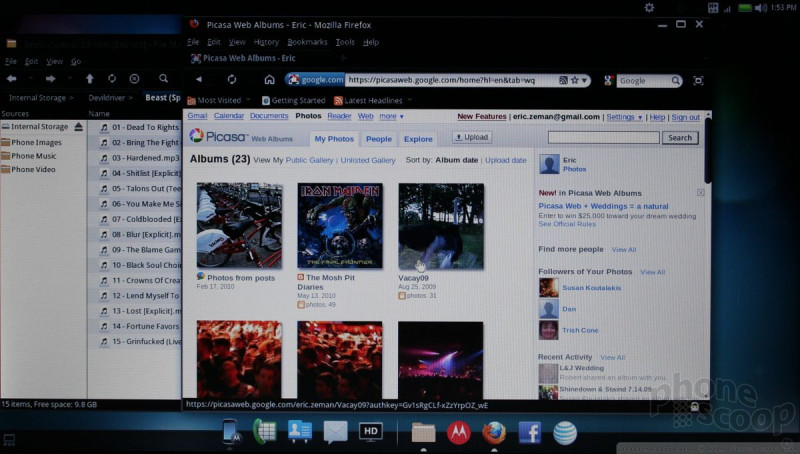
Photos/Video
Photos
The Atrix 4G's 5-megapixel shooter did a great job. Color representation was spot on, white balance was accurate, and it had no trouble performing well in both darker and brighter environments. You'll be pleased enough with the results to share them via Facebook, Flickr, and Picasa. The dual-LED flash is one of the few that actually works as it is supposed to. Using it indoors, the flash helped the Atrix 4G capture decent photographs of smiling faces.
Video
The Atrix 4G can record video at 720p HD resolution at 24 frames per second (the same frame rate as movies.) The results are good. The Atrix 4G reacted well to drastic changes in lighting, it captured sharp and fine detail, and even when zoomed in it performed above par.
Browser/Customize
Browser
The Atrix 4G has the mostly-excellent Android browser. I didn't notice too many changes to the base software. Web sites rendered almost instantly when browsing via Wi-Fi. Pages loaded in a blink. Browsing speeds via AT&T's HSPA network were only slightly slower. (Speed tests had the Atrix max out at 4.8Mbps on the download and 300Kbps on the upload.)
Customize
This is an Android device. All seven home screens can be adjusted and populated with whatever apps, widgets, or shortcuts that you want. The additional feature of resizable widgets makes for an entire realm of customization. The sky is practically the limit.
Extras
Bluetooth
The Atrix 4G supports both mono and stereo Bluetooth headsets. I was able to pair it successfully with a number of different devices, including two PCs and various headsets. Call quality was excellent through a mono headset. Music sounded good through stereo Bluetooth headphones, though it wasn't quite up to par with the mono headset.
Clock
A quick press of the lock key lights up the screen and shows the time nice and large. The time is nearly always visible in the top info bar. There are so many clocks and clock skins you can download from the Android Market, you can really configure the home screen clock in pretty much any way you like. The clock in the info bar can't be customized or changed.
GPS
Both AT&T Navigator and Google Maps 5.0 are included on the Atrix 4G. AT&T's navigation software, which costs $10 per month, does a fine job of delivering turn-by-turn, voice-guided directions. So does Google Maps, but it is free.
Video
Wrap Up
The Atrix 4G is an interesting animal. It's a capable, if somewhat ordinary, Android smartphone that offers better-than-average specs (higher-res display, dual-core processor). Using the phone by itself is a speedy experience all around, and, if you don't mind Motoblur, it offers all the tools that you come to expect from a smartphone.
The battery life, however, is a real deal breaker. Any phone that can't make it from 7AM to 11PM is a dubious purchase at best. With such poor battery life, it makes almost no sense to buy this phone without the laptop dock.
However, if you have no problem charging it every day while the office and/or on a long commute home, or don't mind carrying a spare battery at all times, the Atrix 4G does offer plenty to like. If battery life is a vital feature that you need, I'd suggest you steer clear.
Bottom line? I give Motorola credit for the idea behind the Atrix 4G and the laptop dock, but the execution is somewhat lacking. Fix the battery life and shore up the performance when connected to the laptop dock and the Atrix 4G could easily be used as a netbook/laptop replacement.

Comments
I tried and tried and tried
Freezing up
Battery Life?
Firefox vs. Chrome
It may also have been easier to get Firefox running on ARM architecture since Mozilla is working on a mobile Firefox version, that is supposed to be based on the desktop Firefox code.
atlp99 said:...
Firefox can be tweaked to run better than chrome on slower/ older hardware and on slower connections through the about:config options.
It may also have been easier to get Firefox running on ARM architecture since M
(continues)
atlp99 said:...
Firefox can be tweaked to run better than chrome on slower/ older hardware and on slower connections through the about:config options.
It may also have been easier to get Firefox running on ARM architecture since M
(continues)
The Best Phone I have used
I never really understand the premature reviews. I have used iPhone after iPhone, Samsung Captivate, and finally for about 5 days now the Motorola Atrix.
Since I have been using the Atrix I have been VERY VERY IMPRESSED. I realize that even at 5 days of use I think every review is premature since we have no idea of longevity.
I have been very saddened by Motorola lately. But oh my have they come back and came back hard they did. I will give my opinion on Signal, screen, battery life, speed, and accessories.
signal:
Motorola have been one of the best signal providers for at&t since the razr. This Phone although 4G is not in Michigan yet. who cares. The signal is very very impressive. Better than all the smartphones I have use...
(continues)














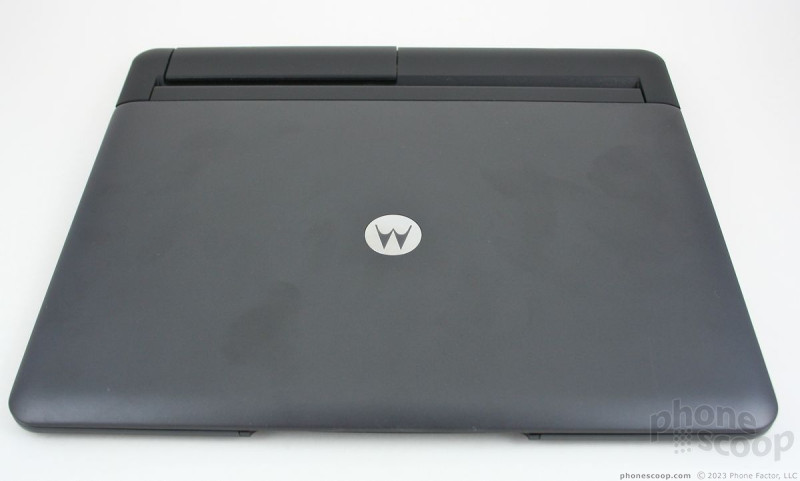






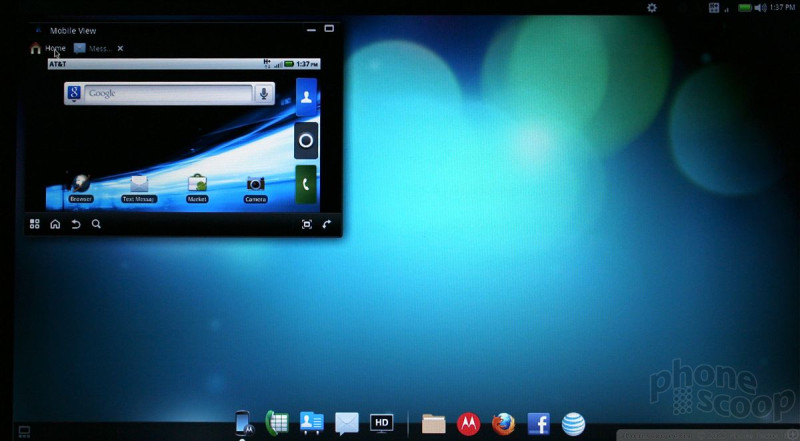



















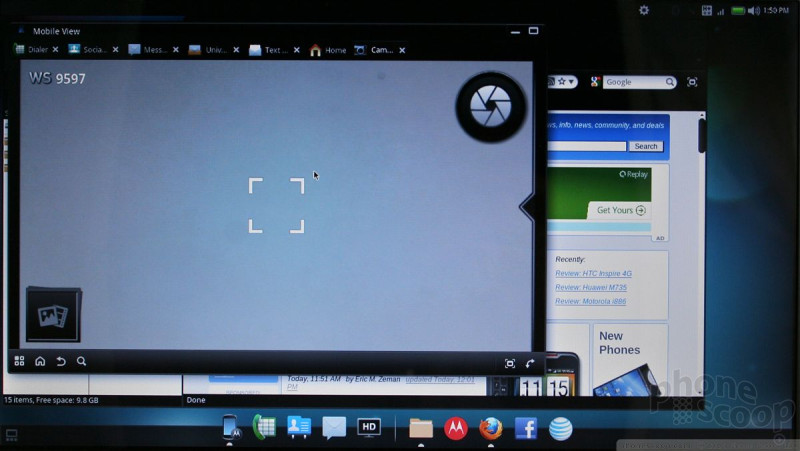

























 Motorola Atrix 4G
Motorola Atrix 4G



